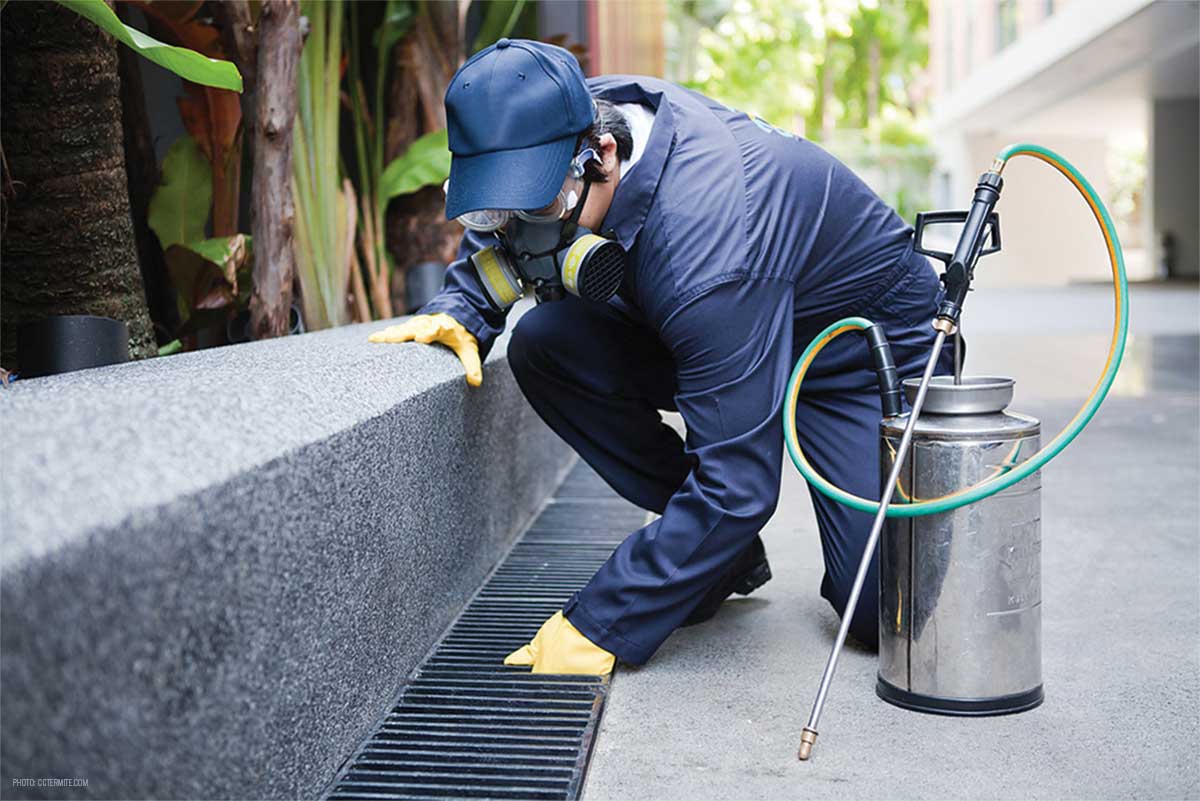Reputable Pest Control Washington DC: Secure Your Home and Service!
Reputable Pest Control Washington DC: Secure Your Home and Service!
Blog Article
Professional Pest Control Techniques for Long-Term Outcomes
Specialist parasite control strategies encapsulate a comprehensive method that starts with a thorough examination and assessment, adhered to by exact pest identification to understand their habits patterns. The implementation of Integrated Insect Monitoring (IPM) principles, paired with eco-conscious treatments, forms the keystone of lasting pest obliteration.
Examination and Assessment
Upon going into a home for bug control services, the first action is a detailed inspection and evaluation to recognize the extent of the invasion and establish the most effective therapy strategy. Expert pest control technicians are trained to carefully take a look at the premises, searching for signs of bug task such as droppings, chomp marks, nests, or any type of structural damages. They will also analyze the conditions that may be drawing in parasites, such as food sources, water leaks, or access points.

Parasite Recognition and Habits

In addition, comprehending the habits of the identified parasite is vital to carrying out effective control measures. Understanding where bugs nest, what they feed on, and their activity patterns can assist pest control specialists develop approaches to eradicate them successfully.
Integrated Insect Monitoring (IPM)
Integrated Insect Management (IPM) strategies incorporate multiple strategies to control and stop bug problems in click reference a lasting and eco friendly fashion. pest control. By integrating approaches such as organic control, environment manipulation, modification of social techniques, and the use of resistant ranges, IPM intends to minimize the use of chemical pesticides
Among the key concepts of IPM is the focus on avoidance. This proactive method includes tracking pest populations on a regular basis to find any prospective concerns before they rise. By identifying insect problems early, pest control measures can be carried out quickly and properly.
Moreover, IPM useful source promotes making use of non-toxic insect control techniques whenever possible. This can include employing natural killers of the pests, introducing valuable pests, or using pheromones to interfere with breeding patterns. By minimizing reliance on chemical pesticides, IPM not only secures the environment but likewise aids keep a balance in the environment.
Environmentally-Friendly Therapies
Carrying out eco-conscious approaches in bug control procedures can efficiently deal with invasions while prioritizing environmental sustainability. Environmentally-friendly treatments focus on decreasing the effect of parasite control methods on ecosystems, non-target organisms, and human health.
An additional key facet of environmentally-friendly treatments is using natural and biodegradable products that damage down quickly without leaving unsafe residues in the atmosphere. Agricultural insecticides obtained from plants like chrysanthemums or neem supply efficient parasite control while presenting minimal danger to non-target varieties. Moreover, employing techniques like heat therapies or scent catches can target certain bugs with precision, reducing the total environmental impact of pest control techniques.
Recurring Surveillance and Maintenance
Routine evaluations by skilled experts are needed to recognize any kind of indicators of insect task, assess the performance of termite solution previous treatments, and make modifications to the parasite control strategy as required. By keeping an eye on bug populations over time, parasite control specialists can track fads, prepare for potential concerns, and implement preventative procedures to decrease the danger of future problems.
In enhancement to surveillance, upkeep practices are crucial for lasting bug control success. This includes applying proper sanitation measures to remove possible food and water sources for parasites, sealing entrance points to stop parasites from entering the premises, and dealing with any type of structural problems that might assist in bug problems (bed bug treatment). By integrating ongoing monitoring and maintenance into an integrated pest management approach, businesses can ensure a pest-free environment and safeguard their residential property versus pricey damages and health dangers
Verdict
Finally, using expert bug control methods such as extensive evaluation and evaluation, precise insect identification and understanding of their actions, incorporated insect monitoring strategies, environmentally-friendly treatments, and recurring monitoring and maintenance are necessary for accomplishing long-lasting lead to insect control. By carrying out these techniques, people can properly take care of bug infestations and preserve a pest-free setting in a sustainable fashion.
Report this page